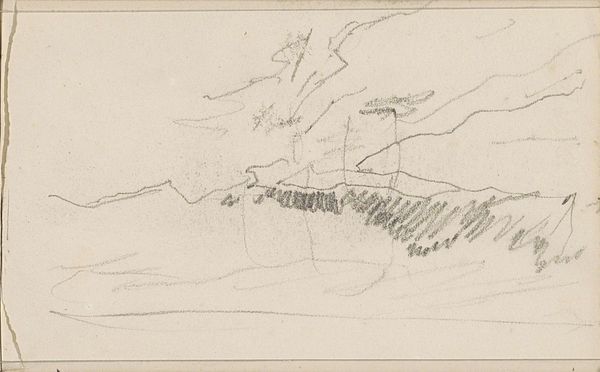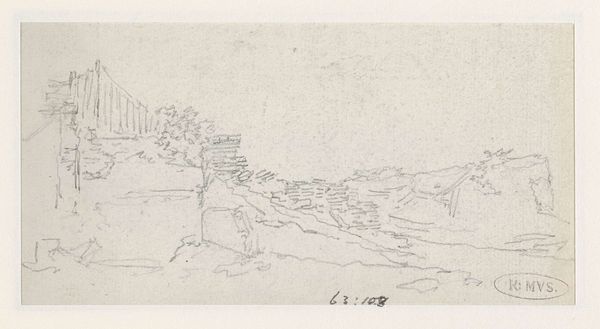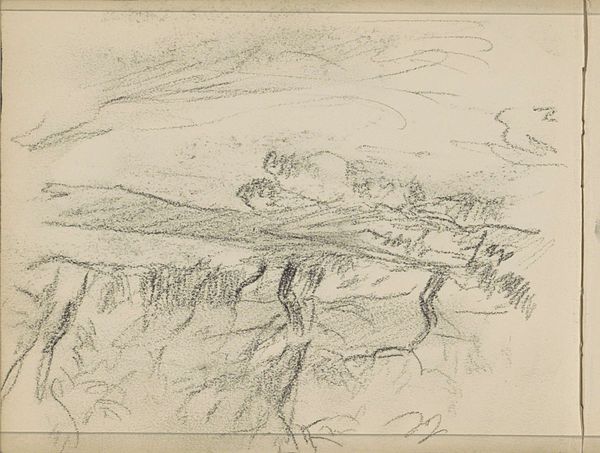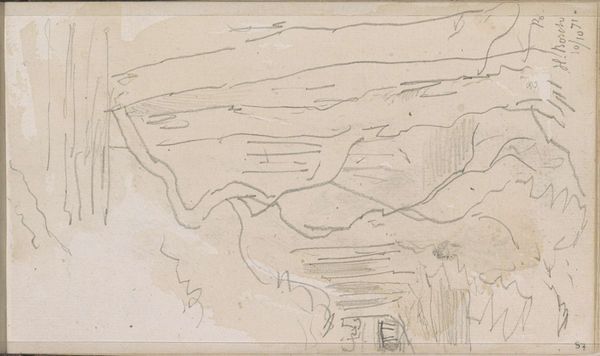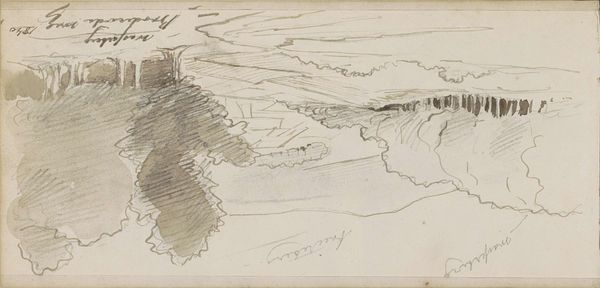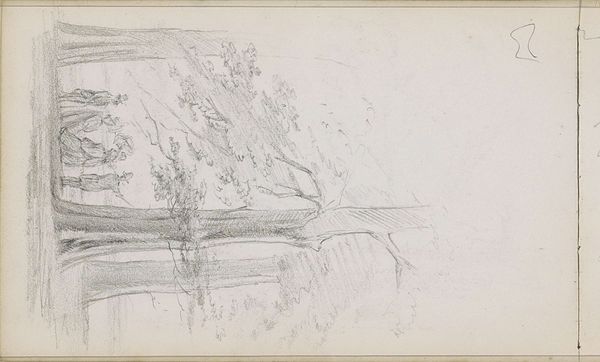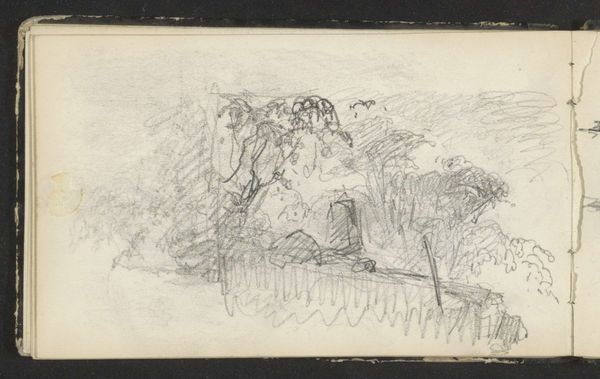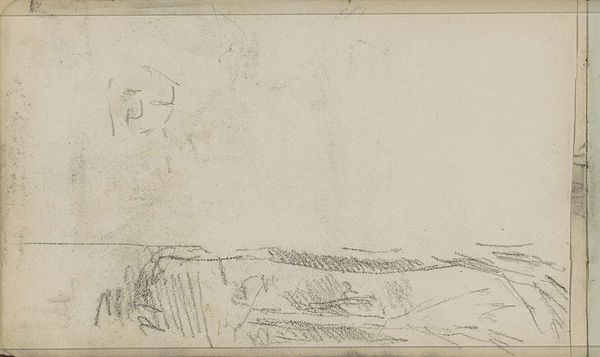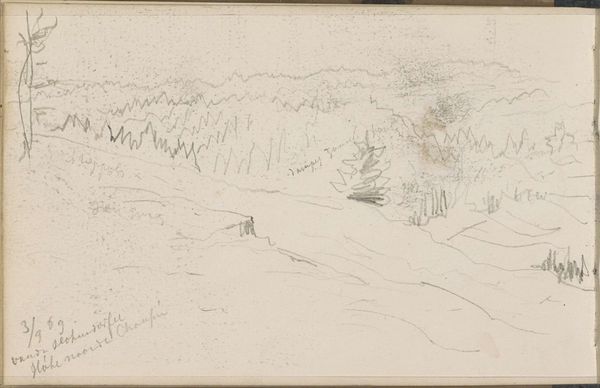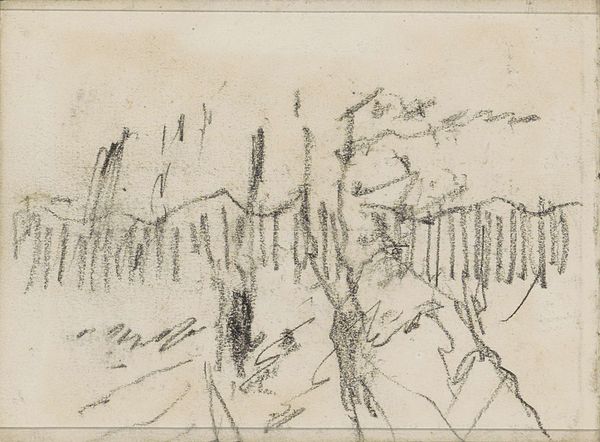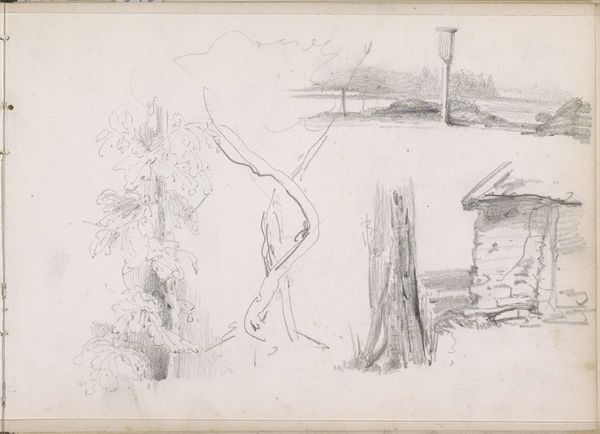
drawing, pencil
#
drawing
#
amateur sketch
#
light pencil work
#
quirky sketch
#
pencil sketch
#
incomplete sketchy
#
landscape
#
personal sketchbook
#
sketchwork
#
romanticism
#
pen-ink sketch
#
pencil
#
sketchbook drawing
#
initial sketch
Copyright: Rijks Museum: Open Domain
Johannes Tavenraat rendered this image of a bridge over a stream in Saxony with pen in 1860. The bridge, a humble link between two natural landscapes, speaks to a universal human desire to connect, to traverse the divides that nature imposes. The bridge motif echoes through art history, from the precarious wooden spans in Chinese landscape paintings, symbolizing the journey of life, to the grandiose Roman aqueducts, testaments to human ingenuity and dominion. Consider the Ponte Vecchio in Florence, a bridge not just for passage, but a bustling marketplace, a hub of human interaction. The image's emotional power lies in its suggestion of transition. Like the Roman god Janus, bridges face both forward and backward, inviting reflection on the past and anticipation of the future. It represents not just physical passage, but also emotional and spiritual crossing, and it is in this constant duality, that it's symbolism is forever preserved.
Comments
No comments
Be the first to comment and join the conversation on the ultimate creative platform.
